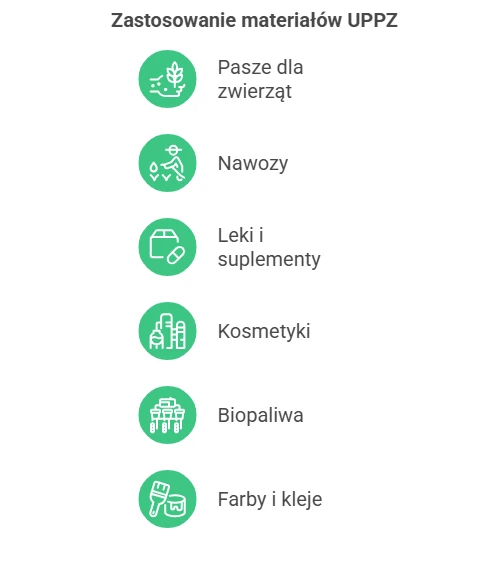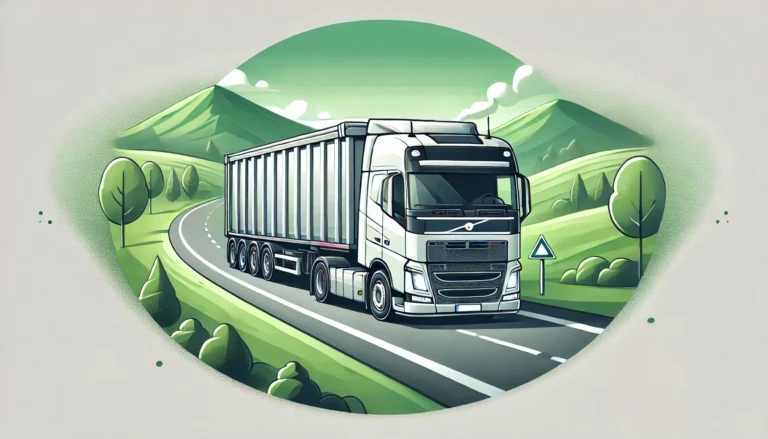How are animal by-products used?

Thanks to modern processing methods, animal by-products are finding applications in sectors such as agriculture, pharmaceuticals, cosmetics and the energy industry. More and more companies are recognising the economic and environmental benefits of processing UPPZ materials. In this article, we outline the main industries that use them and their key applications.
Contact for UPPZ carriage permit:
e.nadolna@ekologistyka24.pl , +48 881 045 376
j.blazewicz@ekologistyka24.pl , +48 500 867 153

Animal by-products in the feed industry
The animal feed industry is one of the main consumers of animal by-products. Meat and bone meals and animal fats are an important component in the production of feed for livestock.
In 2021, the European Union relaxed certain provisions on the use of processed animal protein (PAP) in livestock feed. The amendments allowed the use of pig meal in poultry feed and poultry meal in pig feed, provided strict controls were maintained and animals were not fed meal from the same species.
Approximately 2 million tonnes of animal meal is used annually in feed production, representing about 5% of the region's total feed production. In Poland, according to the Central Statistical Office, meat and bone meal production has averaged 150,000 tonnes per year in recent years, most of which has been consumed on the domestic market.
Agriculture and fertiliser production
Animal by-products are also a valuable raw material in agriculture. Bone meal or organic sludge goes into fertilisers, which enrich the soil with valuable nutrients.
With their nitrogen, phosphorus and calcium content, animal-based fertilisers improve soil structure and increase yields. Such solutions support organic farming and reduce the need for artificial fertilisers.
Animal by-products in pharmacy and medicine
The pharmaceutical industry also benefits from UPPZ. Animal-derived collagen and gelatine form the basis of many medicines and dietary supplements.
In addition, animal enzymes such as trypsin and chymotrypsin are used in the treatment of digestive diseases and anti-inflammatory therapy. With appropriate processing, these ingredients can be used safely and effectively.
Cosmetics and beauty industry
Cosmetology has been using ingredients derived from animal by-products for years. Collagen and elastin are used in anti-ageing cosmetics, improving skin elasticity and reducing wrinkles.
In addition, animal fats are used in the production of soaps, lotions and creams. Natural ingredients are often better absorbed by the skin, which makes these cosmetics very popular.
Animal by-products in the energy industry
In recent years, the use of UPPZ in the energy sector has become increasingly important. Animal fats provide a valuable raw material for biodiesel production, which contributes to reducing fossil fuel consumption.
The production of biofuels from UPPZ is a green alternative to conventional energy sources. This enables the energy sector to reduce CO2 emissions while also using waste in an efficient manner.
Chemical industry and other applications
The chemical industry also finds uses for animal by-products. Adhesives, lubricants and paints often contain ingredients of animal origin to improve their performance.
Thanks to innovative processing methods, it is possible to use UPPZ in many new areas. The introduction of advanced technologies means that even previously unusable waste can be reused.
Import and export of animal by-products
Trade in animal by-products is strictly regulated at both national and international level. In Poland, the UPPZ is supervised by the Veterinary Inspectorate.
More than 20 million tonnes of UPPZ are generated annually in the European Union, of which around 2 million tonnes in Poland. Trade in these products plays an important role in the country's economy. Many EU countries import animal meal and fats for the production of feed, cosmetics and biofuels.
Benefits of UPPZ
The use of animal by-products has many benefits. Firstly, it reduces the amount of material that could end up in illegal landfills or require costly disposal. Secondly, it provides valuable raw materials to various industries, reducing production costs.
The development of UPPZs promotes the efficient use of raw materials and reduces pressure on the environment by reducing the need for primary natural resources.
***
Animal by-products are a valuable resource for many industries. Their use brings economic and environmental benefits. The feed, agricultural, pharmaceutical, cosmetic, energy and chemical industries are just some of the sectors that benefit from them.
In the future, further developments in UPPZ processing technology may open up new possibilities for their use. It is therefore worth investing in innovative solutions to make even more efficient use of these raw materials.






